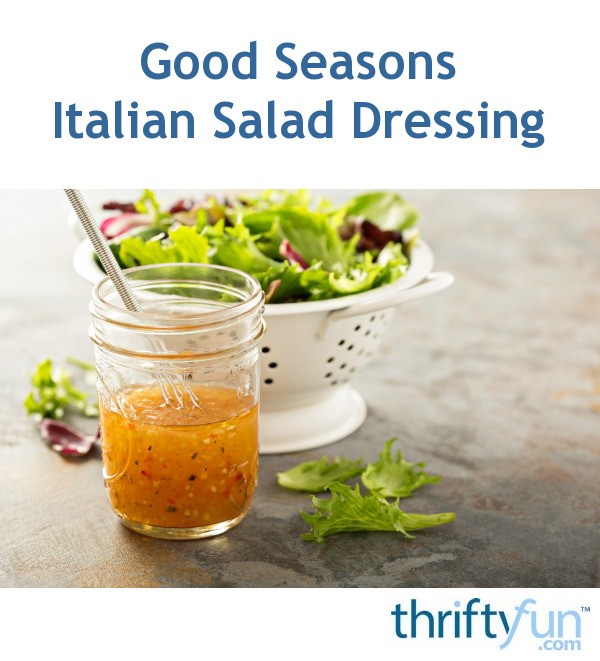
Easy Good Seasons Italian Salad Dressing Recipe Homemade
Good seasons italian salad dressing recipe: This homemade version delivers a tangy, herb-infused flavor that elevates any salad. Its quick, easy, and customizable.
Equipment
- Essential tools for preparing a good seasons italian salad dressing recipe:
- Measuring cups and spoons
- Small mixing bowl or jar with a tight-fitting lid
- Whisk or fork (if using a bowl)
- Knife and cutting board (for mincing red onion)
Ingredients
- 1/4 cup olive oil
- 1/4 cup white wine vinegar
- 2 tablespoons water
- 1 tablespoon finely minced red onion
- 2 teaspoons dried oregano
- 1 teaspoon dried basil
- 1 teaspoon dried parsley
- 1/2 teaspoon garlic powder
- 1/4 teaspoon salt
- 1/4 teaspoon black pepper
- 1/4 teaspoon sugar (optional)
Instructions
- Step 1: Combine Ingredients: In a jar with a tight-fitting lid, combine the olive oil, white wine vinegar, water, minced red onion, dried oregano, dried basil, dried parsley, garlic powder, salt, pepper, and sugar (if using).
- Step 2: Shake Well: Secure the lid tightly onto the jar. Shake vigorously for about 30 seconds, ensuring that all the ingredients are well combined and the dressing appears slightly emulsified.
- Step 3: Taste and Adjust: Open the jar and taste the dressing. Adjust seasoning as needed. Add a pinch more salt or pepper to taste, or a splash more vinegar for extra tang.
- Step 4: Let Flavors Meld: For optimal flavor, refrigerate the dressing for at least 30 minutes before serving. This allows the herbs to rehydrate and the flavors to meld together.
- Step 5: Shake Before Serving: Before serving, shake the dressing again to re-emulsify, as it may separate slightly upon standing. Drizzle over your favorite salad and enjoy. Optional Tips: For a creamier dressing, add 1/2 teaspoon of Dijon mustard during Step 1. To add a bit of heat, include a pinch of red pepper flakes. Red wine vinegar can be substituted for white wine vinegar for a bolder flavor.
Notes
Variations
This good seasons italian salad dressing recipe lends itself well to numerous adaptations:
- Ingredient Swaps: Red wine vinegar can replace white wine vinegar for a bolder flavor. Fresh herbs, finely chopped, can substitute dried herbs, use approximately 1 tablespoon of fresh herbs for every teaspoon of dried. Dijon mustard adds a creamy texture and tangy flavor (about 1/2 teaspoon).
- Regional Styles: A squeeze of fresh lemon juice imparts a Sicilian twist. A pinch of red pepper flakes introduces a Calabrian heat. Adding sun-dried tomatoes (finely chopped or pured) contributes a Mediterranean flair.
- Dietary Adaptations: For a sugar-free version, omit the sugar or substitute with a calorie-free sweetener. To make it vegan, ensure the Dijon mustard (if using) is vegan-friendly. For a low-sodium version, reduce or eliminate the added salt, relying on the herbs for flavor.
Serving Suggestions
This versatile dressing enhances a wide array of dishes:
- Classic green salads
- Pasta salads with vegetables and cheese
- Marinade for grilled chicken, fish, or vegetables
- Drizzle over roasted vegetables
- Accompanying a charcuterie board
Storage Tips
Proper storage preserves the freshness and flavor of the good seasons italian salad dressing recipe:
- Store in an airtight container (preferably a jar with a lid) in the refrigerator.
- The dressing will keep for up to 1 week.
- Shake well before each use, as the ingredients may separate upon standing.
Frequently Asked Questions
- Question 1: Can I use fresh garlic instead of garlic powder?
Yes, finely minced fresh garlic can be used. Start with 1/2 teaspoon and adjust to taste, bearing in mind the flavor will intensify over time. - Question 2: My dressing separated after refrigeration. Is it still safe to use?
Yes, separation is normal. Shake vigorously before each use to re-emulsify. The dressing is safe to consume as long as it smells and tastes fresh. - Question 3: Can I freeze this dressing?
Freezing is not recommended, as it can negatively impact the texture and cause the emulsion to break. - Question 4: The dressing tastes too acidic. How can I balance the flavor?
Add a touch more olive oil or a pinch of sugar (or a sugar substitute) to balance the acidity.